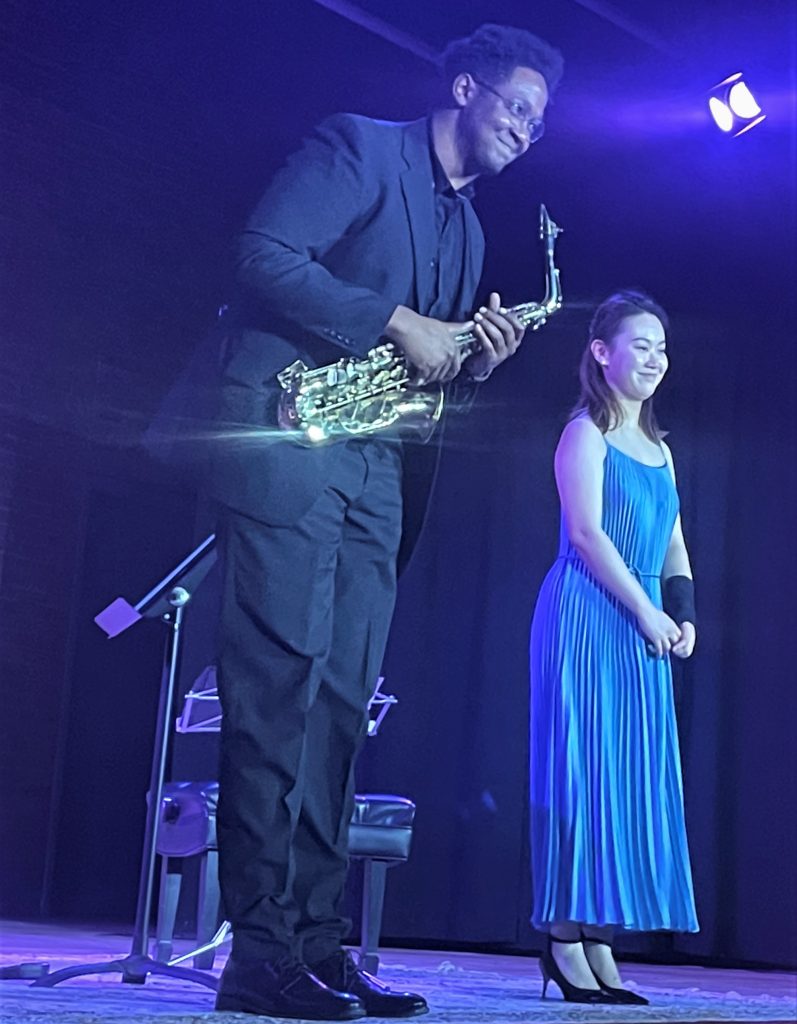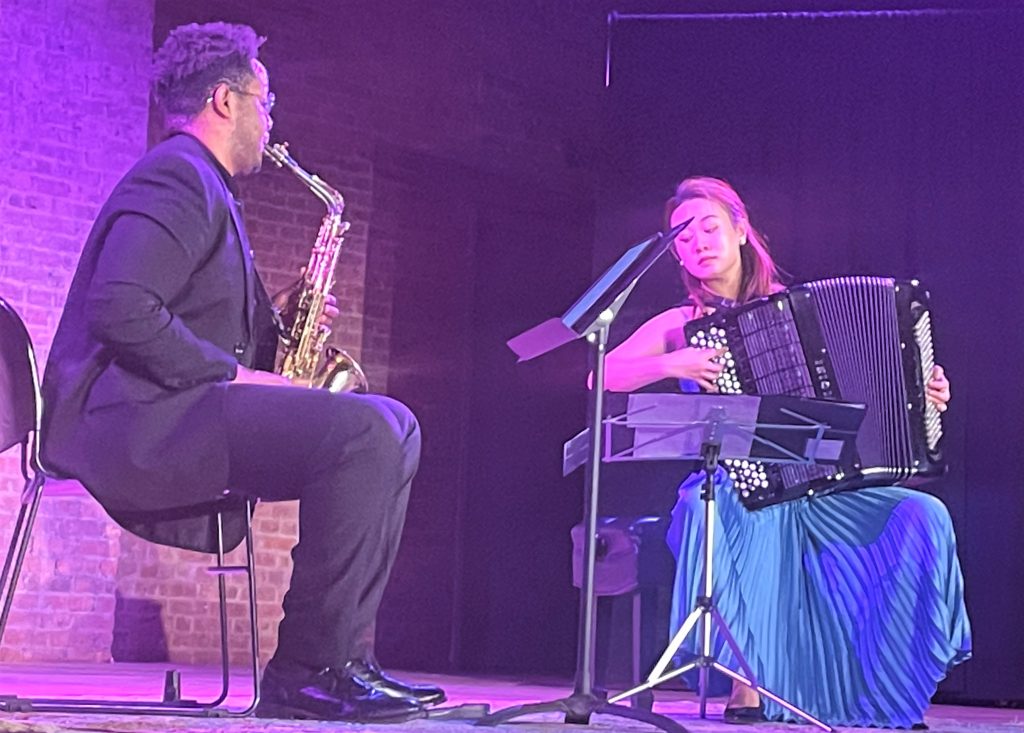
by Kevin T McEneaney
Last Sunday at The Stissing Center’s Young Artists Showcase series saxophonist Steven Bank and accordionist Hanzhi Wang performed an idiosyncratic selection of Classical works. They opened with a recorder sonata of George Frederick Handel in G minor, HWV 360. The substitution of a soprano saxophone for the recorder was ably arranged while the accordion replaced bass continuo. As a showcase innovation, this fronted the unusual ability of Banks to display virtuoso high notes while Wang offered more dazzling lower notes than an old basso continuo could supply. As a novelty, this worked as a surprising adaptation to display their musical finesse, yet this displacement of time and technique left one to wonder: one was neither in the past nor present but immersed in a quirky experiment as one admired the elegance of playing while being lost without a context to frame one’s pleasure of appreciation for their talent.
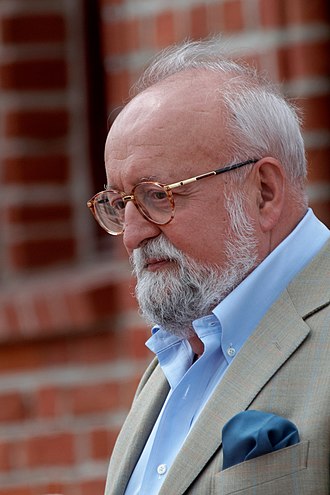
As if aware of this conundrum, they moved into contemporary music with Three Miniatures by the Polish composer Krzysztof Penderecki (1933-2020). The Allegro charming opening was transmuted into an Andante cantabile dance motif which appeared to reference folk dancing; the Allegro finale offered a postmodern exploration of dance, concluding with two sharp notes, as if to query the audience in a bitingly sarcastic manner: which kind of music do you prefer? This was lively and amusing—it floated free of either historical encumberment or tradition, yet it delivered the message of a dense conundrum: is the past a refuge from the present, or is the present exhibition a symptomatic exhibition of something we are not addressing?
Wang then played an adaptation of five passages from J. S. Bach’s Goldberg Variations (1741) which was written for harpsichord performances, although today it is often performed on piano keyboard. Wang opened with an Aria, then playing variations: 1, 18, 7, 14 on solo accordion. The harpsichord has a lighter, more ethereal sound than piano; here the accordion offered a lower sound than harpsichord. yet a far more mellow sound than the more dramatically inclined piano. The arrangement was so adept that the accordion no longer sounded like a folk instrument, occupying an attractive limbo between harpsichord and piano. This was a delightful and unexpected performance by an amazingly talented accordionist.
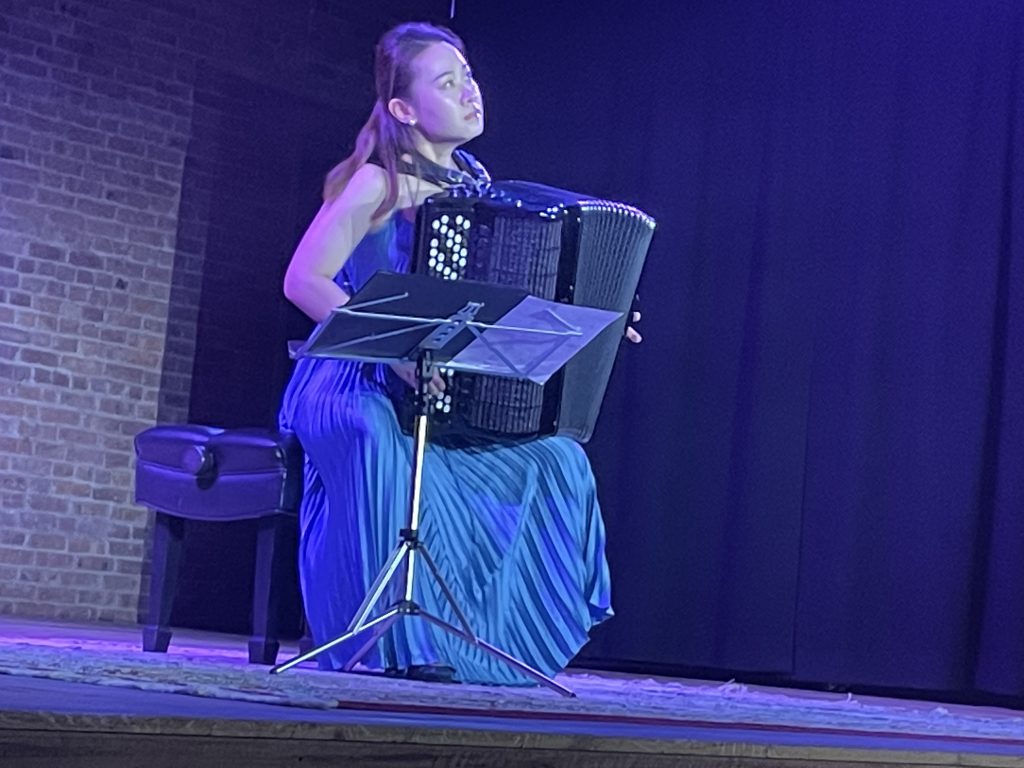
As if aware of this conundrum, they moved into contemporary music with Three Miniatures by the Polish composer Krzysztof Penderecki (1933-2020). The Allegro charming opening was transmuted into an Andante cantabile dance motif which appeared to reference folk dancing; the Allegro finale offered a postmodern exploration of dance, concluding with two sharp notes, as if to query the audience in a bitingly sarcastic manner: which kind of music do you prefer? This was lively and amusing—it floated free of either historical encumberment or tradition, yet it delivered the message of a dense conundrum: is the past a refuge from the present, or is the present exhibition a symptomatic exhibition of something we are not addressing?
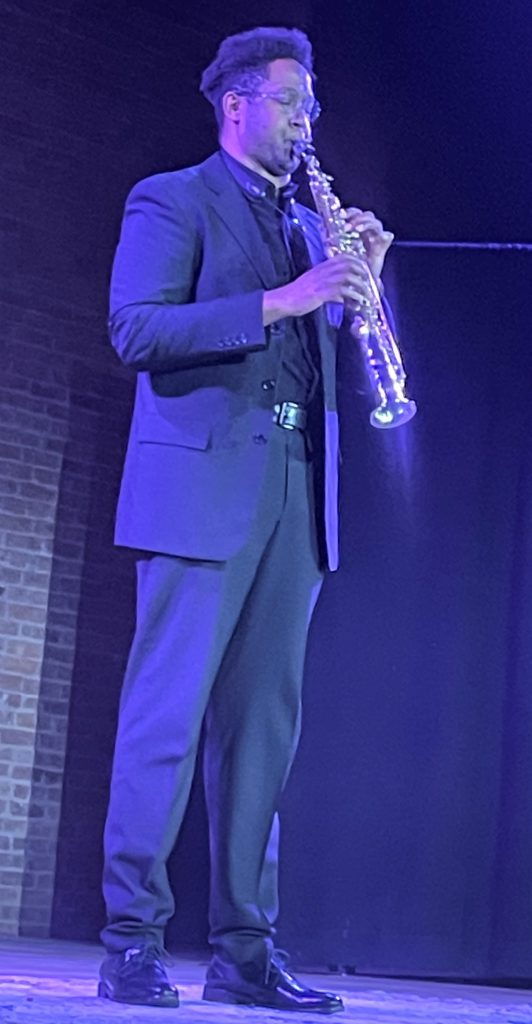
Banks then appeared to perform Bach’s Partita for flute in A minor, BWV 1013 (c. 1722) which describes a series of dances. The opening Allemande, a stately two-step dance which featured occasionally gussied by 3/16th notes was a popular Franco-Germanic dance that anyone can perform socially, yet usually engaged by upper class people. Corrente was a much faster, complicated, swerving steps for adept dancers and here Bach shows off what he can provide like no other in ornamentation. Sarabande was a Spanish triple-meter dance often thought be lively and erotic. The concluding Bourrée angloise, which means drunken English dance, offered Bach a comic ending mocking the primitive quality of English dancing in the early 18th century. Here Bank excelled in the Corrente and Bourrée angloise as he showcased how his sax could out-perform a primitive recorder.

My favorite piece of the concert was the enchanting and amusing The Elements by Miklaj Majkusiak (b. 1983) who graduated with a degree in both composition and accordion. This work was simply magical and nearly impossible to describe—you had to be there! The interplay between sax and accordion was itself a complicated dance, alternately melodious and raucous, running through the psychology of earth, air, fire, and water, the later being closer to the multiplicity of the languages hominids speak; this was a stunning composition by a composer who knew what the accordion might, under the fingers of an excellent player, could produce. I would like to hear this piece again, yet I doubt I will have the opportunity….
The duo concluded with Milonga del angel by the renowned Astor Piazzolla, one of greatest composers of the twentieth century who also composed numerous works for the accordion. Here a resonant and melodic blend of sax and accordion delivered a charming and sophisticated conclusion to a most unusual and delightful concert!!!
